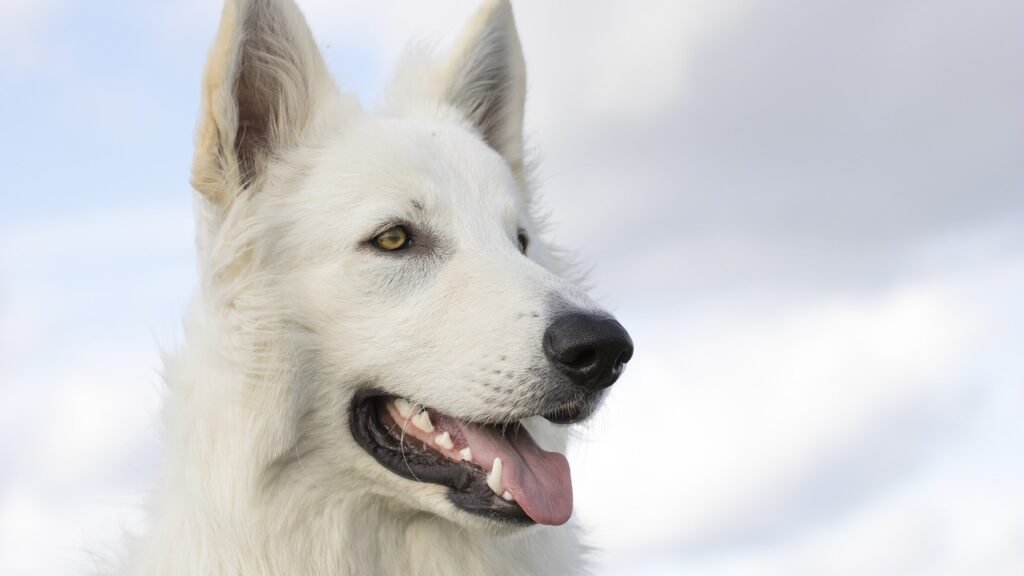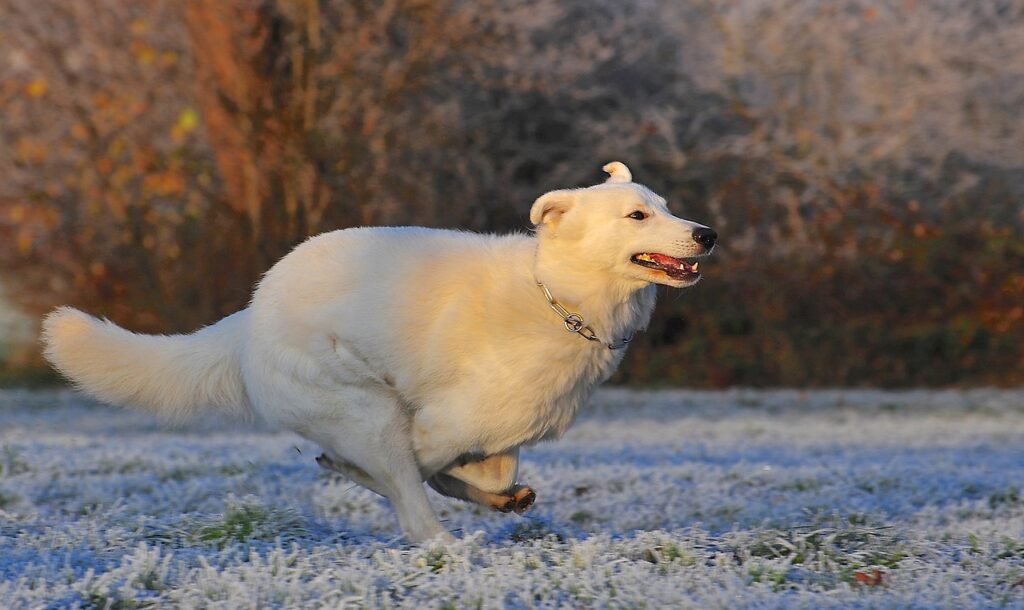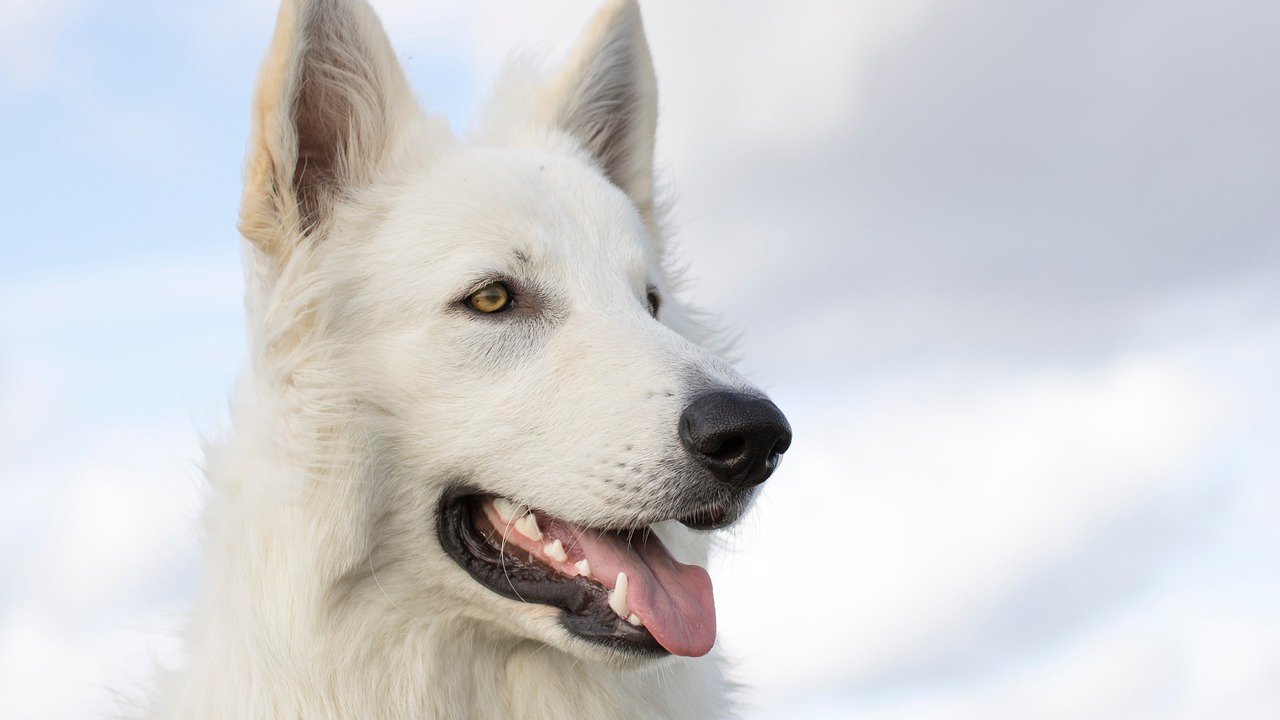If you’ve recently welcomed a White Shepherd into your family, you may be wondering about the best way to train and engage your furry friend. With their striking white coat and intelligent demeanor, White Shepherds are not only beautiful but also highly trainable. But where do you start? In this article, we’ll explore the world of White Shepherd training, discovering the specific tricks and tasks that can help enhance their learning and bring out the best in these incredible dogs. Whether you’re a first-time owner or an experienced dog parent, get ready to unlock new levels of bonding and obedience with your beloved White Shepherd.
Basic Obedience Training
Basic obedience training is the foundation for a well-behaved and disciplined dog. It ensures that your White Shepherd understands and responds to simple commands, making daily interactions easier and more pleasant for both of you. Here are some important commands to focus on during basic obedience training.
Sit
Teaching your White Shepherd to sit on command is one of the first and most fundamental commands to work on. It not only helps in controlling your dog’s behavior but also establishes you as the leader. To train your dog to sit, hold a treat close to their nose and slowly raise it above their head. As their head goes up, their bottom will naturally go down into a sitting position. Once they are in a sitting position, say “sit” and reward them with the treat and praise. Practice this command regularly until they respond reliably to the cue.
Stay
The “stay” command is crucial for situations when you need your White Shepherd to maintain a specific position and not move until given permission. Start by commanding your dog to sit or lie down. Gradually increase the duration of the stay, starting with just a few seconds and working your way up to several minutes. Always reward your dog with treats and praise when they successfully stay in place. Remember to release them from the stay command by saying “okay” or “release” in a cheerful tone.
Down
The “down” command teaches your White Shepherd to lie down on command. This command is useful in various situations, such as preventing your dog from jumping up on people or when you want them to settle down in a particular spot. Begin by holding a treat in your hand and leading it to the ground between your dog’s paws. As they follow the treat, their body will naturally lower into a lying-down position. Once they are lying down, say “down” and reward them with the treat and praise. Repeat this command regularly until your dog responds consistently.
Come
The “come” command is essential for ensuring your White Shepherd’s safety and control in any situation. Teaching your dog to come when called can prevent accidents and also allow for more off-leash freedom. Start in an environment with no distractions and call your dog’s name followed by the command “come.” Use a happy and excited tone of voice and reward your dog with treats, praise, and affection when they reach you. Gradually introduce distractions, such as other people or toys, and practice the “come” command regularly to reinforce their response.
Heel
The “heel” command teaches your White Shepherd to walk calmly and closely by your side. This command is particularly useful during walks or when navigating through crowded areas. Begin by holding your dog’s leash in one hand and a treat in the other, positioned near your leg. Start walking, and when your White Shepherd takes a step towards you, reward them with the treat and praise. Repeat this process, gradually increasing the number of steps required before giving a reward. With consistent practice, your dog will learn to walk politely by your side.
Advanced Obedience Training
Once your White Shepherd has mastered the basic obedience commands, it’s time to move on to more advanced training exercises to further enhance their skills and behavior.
Off-leash Training
Off-leash training is an important step to achieve a higher level of control and trust with your White Shepherd. Start in a secure and enclosed area, such as a fenced yard or a dog park. Begin by practicing the basic commands without a leash, rewarding your dog for responding correctly. Gradually increase the distance between you and your dog while still maintaining control. Use treats, toys, or praise as rewards to reinforce their good behavior. It’s crucial to remember that off-leash training should only be attempted in safe and designated areas.
Distance Commands
Distance commands are essential for situations where you want your White Shepherd to perform commands from a distance. Start by practicing the basic commands at a close distance, gradually increasing the distance between you and your dog. Use clear hand signals or verbal cues to communicate your commands effectively. Reward your dog for successfully following the commands from a distance. With consistent practice, your White Shepherd will learn to respond reliably to commands, even when they’re not right beside you.
Stay with Distractions
Teaching your White Shepherd to stay in the presence of distractions is a crucial skill that can prevent potentially dangerous situations. Start by introducing mild distractions, such as toys or treats placed near your dog. Command your dog to stay, and if they successfully remain in place, reward them with treats and praise. Gradually increase the level of distractions, such as people walking by, other animals, or loud noises. Always ensure that the distractions are manageable and safe for your dog. This training will help your White Shepherd maintain focus and self-control in a variety of settings.
Advanced Heel
Advanced heel training builds upon the basic heel command and focuses on precision and off-leash control. Start by reinforcing the basic heel command, ensuring that your White Shepherd walks calmly by your side. Gradually increase the challenge by adding sudden stops, turns, and changes in pace. Introduce distractions and practice walking through crowded areas while maintaining the heel position. Remember to reward your dog for their excellent performance and continue practicing to refine their skills.

This image is property of pixabay.com.
Socialization Training
Socialization training is crucial for White Shepherds to become well-rounded and confident dogs. It exposes them to different people, animals, and environments, ensuring they feel comfortable and secure in various situations.
Introduction to People
Introduce your White Shepherd to a wide range of people, including different ages, genders, and appearances. Encourage positive and supervised interactions, allowing your dog to approach new people at their own pace. Provide treats and praise when your dog behaves appropriately and maintains a friendly demeanor. Socializing your White Shepherd with people will help them develop trust and reduce fear or aggression towards strangers.
Introduction to Other Animals
Expose your White Shepherd to various animals, such as cats, other dogs, and small mammals, in controlled and safe environments. Supervise their interactions closely and offer praise and treats for positive behavior. Gradual exposure to different animals will help your dog become more adaptable and less reactive in the presence of unfamiliar animals.
Exposure to Different Environments
Take your White Shepherd to different environments, such as parks, beaches, busy streets, and shopping centers. Expose them to different surfaces, sounds, and sights. Start with less overwhelming environments and gradually increase the level of exposure. Always ensure your dog’s safety and well-being during these outings. By exposing your White Shepherd to different environments, you will help them become more confident and adaptable, reducing the chance of anxiety or fear-related behaviors.
House Training
House training is an essential aspect of owning a White Shepherd. With consistent and patient training, you can teach your dog to eliminate outside and develop good bathroom habits.
Crate Training
Crate training is an effective method to facilitate house training and provide your White Shepherd with their own secure space. Introduce your dog gradually to the crate, making it a positive and comfortable environment. Use treats and praise to encourage them to enter and stay inside the crate. Start with short periods of confinement, gradually increasing the duration. Take your dog outside immediately after being released from the crate to reinforce the association between the crate and going outside to eliminate.
Potty Training
Establish a regular bathroom routine for your White Shepherd, taking them outside to eliminate at consistent intervals throughout the day. Monitor your dog closely for signs of needing to go, such as sniffing, circling, or whining. Take them to the designated potty area and use a designated command, such as “go potty.” Reward your dog with treats and praise when they successfully eliminate outside. Consistency, positive reinforcement, and patience are key to successful potty training.

This image is property of pixabay.com.
Leash Training
Leash training is important for both your White Shepherd’s safety and your overall walking experience. Training your dog to walk politely on a leash will make walks more enjoyable and prevent pulling or other undesirable behaviors.
Walking on a Loose Leash
Start by attaching the leash to your White Shepherd’s collar and begin walking. Whenever your dog pulls or creates tension on the leash, stop and stand still. Wait for your dog to turn back towards you or loosen the leash tension. Once your dog is walking on a loose leash, continue walking and offer treats and praise as rewards for good behavior. Consistency and patience are important during leash training.
Stopping Pulling
If your White Shepherd continues to pull on the leash despite your efforts, try changing direction whenever they pull. A sudden change in direction will create a natural consequence for pulling and encourage your dog to pay attention to your movements. Reward your dog for walking beside you or with a loose leash. With practice, your White Shepherd will learn to walk politely without excessive pulling.
Agility Training
Agility training is a fun and challenging activity that can benefit both you and your White Shepherd. It involves navigating through a timed obstacle course, showcasing your dog’s strength, speed, and obedience.
Jumping Over Hurdles
Teach your White Shepherd to jump over hurdles of varying heights. Start with low hurdles and gradually increase the height as your dog becomes comfortable and confident. Use treats or toys as rewards and guide your dog over the hurdle. Always prioritize safety, ensuring that the hurdles are appropriate for your dog’s size and jumping ability.
Running Through Tunnels
Introduce your White Shepherd to tunnels and train them to run through them on command. Start with short tunnels and encourage your dog to enter by using treats or toys. Gradually increase the length and complexity of the tunnels. Develop a clear command, such as “tunnel,” to signal your dog to enter and run through. Reward your dog for successfully completing the activity.
Climbing A-Frame
Teach your White Shepherd to climb and walk across an A-frame obstacle. Start by enticing your dog with treats or toys, guiding them up and across the A-frame. Reward your dog for each successful climb and gradually increase the height of the A-frame as they become more comfortable and confident. With consistent practice and positive reinforcement, your White Shepherd will master this agility training element.
Trick Training
Trick training not only enhances your White Shepherd’s mental stimulation but also strengthens the bond between you and your dog. Here are some fun tricks to teach your White Shepherd.
Shake Hands
Teach your White Shepherd to offer their paw for a handshake. Start with a closed fist and extend it towards your dog. When your dog touches your fist with their paw, say “shake” and reward them with treats and praise. Repeat this process until your dog learns to offer their paw without the need for a closed fist.
Play Dead
Teaching your White Shepherd to play dead is not only entertaining but also impresses others. Start by commanding your dog to lie down. Then, gently roll them onto their side while saying “play dead.” Reward your dog with treats and praise when they remain in the position. Gradually increase the duration of the play dead position before rewarding your dog.
Roll Over
Teach your White Shepherd to roll over by starting with the “down” command. Hold a treat close to your dog’s nose and slowly lure them into a roll-over position by moving the treat in a circular motion. As their body follows the treat, they will roll over onto their back. Once they complete the roll-over, say “roll over” and reward them with treats and praise.
Speak
Teaching your White Shepherd to speak on command can be a useful trick and a way to release excess energy. Start by exciting your dog and provoking them to bark naturally. Immediately after they bark, say “speak” and reward them with treats and praise. Repeat this process, gradually introducing the command without needing to provoke the bark.
Scent Work
White Shepherds have an excellent sense of smell, which makes them well-suited for scent work. Engaging your dog’s olfactory abilities through scent work can provide mental stimulation, challenge their senses, and tap into their natural instincts.
Tracking Scents
Teach your White Shepherd to track scents by introducing a specific scent, such as a cotton pad soaked in an essential oil or their favorite treat. Start by placing the scent on the ground and allowing your dog to sniff it. Then, encourage your dog to follow the scent trail by placing more scent-soaked cotton pads or treats along a designated path. Reward your dog with treats and praise when they successfully follow the scent trail to the end.
Search and Rescue Training
White Shepherds excel in search and rescue work due to their intelligence, agility, and keen sense of smell. This advanced form of scent work involves training your dog to locate missing persons or items in various environments. Seek professional guidance and specialized training programs to properly develop your White Shepherd’s search and rescue skills.

Service Dog Training
White Shepherds possess the intelligence and temperament required to be effective service dogs, assisting individuals with disabilities. Service dog training requires specialized instruction and professional guidance to ensure the safety and well-being of both the dog and the handler.
Guiding the Visually Impaired
White Shepherds can be trained to serve as guide dogs, providing assistance and guidance to individuals with visual impairments. This training involves teaching the dog to navigate obstacles, stop at curbs, and respond to various commands from the visually impaired handler.
Assisting Individuals with Disabilities
White Shepherds can also be trained to assist individuals with disabilities, such as mobility support, retrieving items, or providing emotional support. Based on the specific needs of the individual, service dog training programs tailor the training exercises and commands accordingly.
Protection Training
Protection training should only be pursued under the supervision of experienced professionals and for appropriate purposes, such as personal protection work or security training.
Bite Work
Protection training involves teaching your White Shepherd to bite on command and release upon command. This training is best left to professional trainers who employ humane and effective methods. Strict control and proper management of protection-trained White Shepherds are essential to ensure their behavior remains appropriate and safe.
Bark on Command
This command encourages your White Shepherd to bark on command. While it can be a fun and impressive trick, it is important to maintain control and prevent excessive barking. Use this command sparingly and ensure that your dog understands when barking is appropriate and when it is not.
In conclusion, White Shepherds are intelligent and versatile dogs that excel in various types of training. From basic obedience training to advanced skills, socialization, and specialized training, these loyal and obedient dogs can fulfill a wide range of roles and tasks. Patience, consistency, and positive reinforcement are key to successfully training your White Shepherd, ensuring they become a well-behaved and happy companion. Remember to tailor the training to your dog’s individual needs and capabilities, always focusing on their well-being and building a strong bond of trust and respect.

